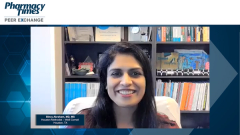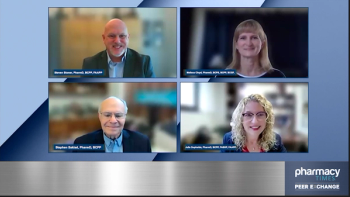
Monitoring Patients with C. difficile Infection (CDI) and rCDI
Dr Teena Chopra shares her approach to monitoring patients with C difficile infection (CDI).
Episodes in this series

Paul Feuerstadt, MD:Teena, when we think about C difficile and recurrence of C difficile, what approach do you have or what approach do you suggest for monitoring patients and how long should they be monitored for?
Teena Chopra, MD, MPH: That’s a great question, Paul. As you know, 1 of 6 people end up getting recurrent C difficile within 2 to 8 weeks of their initial episode. What’s important is that when we’re treating patients with C difficile, we guide them when to contact their physicians because these patients can be colonized. Any install to their microbiome can get recurrent C difficile. Even after antibiotics are stopped within the first couple of months, they’re at very high risk of getting recurrent C difficile. I usually follow these patients for at least 3 months after their initial episode and sometimes up to 6 months. If the patient is at high risk, like an older patient or a patient who’s immunocompromised and on steroids, transplant patients in particular can get recurrent C difficile even within the first year. Keep in mind that in addition to also guiding them on what infection prevention precautions to take at home, washing their hands with soap and water to prevent the spread and getting reinfected is so important.
Paul Feuerstadt, MD:Excellent. Teena, you bring up a really important point, which is that there’s no correct answer. Some believe it’s 8 weeks, some believe it’s 4 weeks, some believe it’s 90 days, 6 months, or 1 year. The key concepts are what you said, which is that the highest risk for occurrence is about 8 weeks. A lot of us go 90 days, or 12 weeks—6 months in those who have multiple risk factors, 1 year if they have quite a few risk factors. My question is, do you test to confirm eradication?
Teena Chopra, MD, MPH: No. I wouldn’t confirm eradication because the test can be positive for a long period of time. It depends on your clinical judgment. As a physician, what are you seeing? As a clinician, how is your patient doing? What is the frequency of their diarrhea? [Are you helping them] maintain a stool diary, guiding them on their diet—all the things Tom [mentioned]—to get back to that state of eubiosis and get out of dysbiosis. [We have to] guide them on a high-fiber diet, full of vegetables and fruits, including diverse foods, so they can have that good microbiome.
Paul Feuerstadt, MD:Excellent. I don’t check either to confirm eradication because what’s essentially happening is the microbiota are in the process of eradicating, so the patients will probably be colonized at that point because our bodies are working things out.
Transcript edited for clarity
Newsletter
Stay informed on drug updates, treatment guidelines, and pharmacy practice trends—subscribe to Pharmacy Times for weekly clinical insights.






















































































































































































































